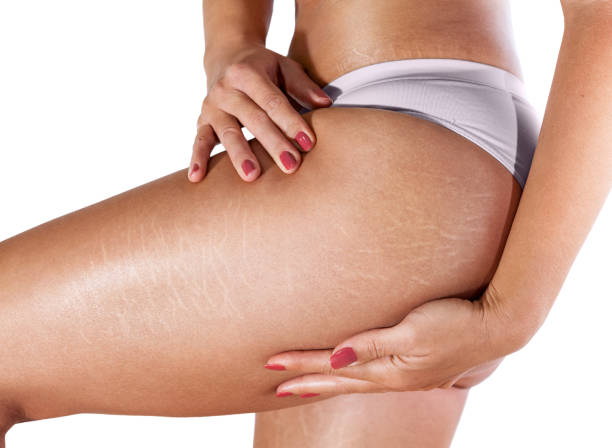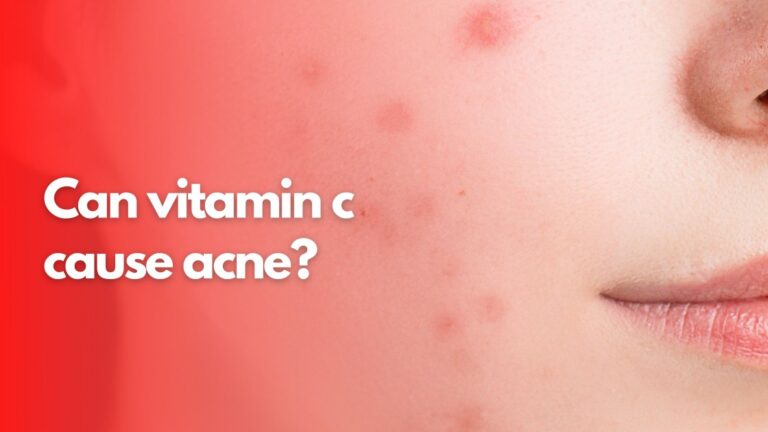With the growing need for beauty and skin enhancement among youth in this modern age, people are seeking all kinds of remedies in order to ameliorate their skin problems and that of stretch marks is not an exception.
Stretch marks significantly impact both physically and psychologically on the individual who has it. It can result in development of low self esteem and reduced self confidence. The bearer may become depressed as a result and tend to look for all sorts of remedies.
Common areas affected are; buttocks, abdomen, thighs, breast, and shoulders.
What are stretch marks
Stretch marks (striae distensae) are common dermal scars or lesions which arise due to stretching of the dermis of the skin. Stretch marks look or appear pink or red in color and over time with atrophic changes attain a white color.
The dermis is the layer that lies below the epidermis and above the subcutaneous layer of the skin. The dermis is made of fibrous tissue, collagen and elastic tissues allowing for flexibility and strength to the skin.
Stretch marks at the acute stages are characteristically erythematous, red with stretched flat lesions lying perpendicular to the direction of the skin tension [Ud-Din, et al., 2015].
Some pathological and histological changes occur prior to observable changes that are evident on the skin. Inflammatory processes involving mast cell degranulation, macrophage, and lymphocyte recruitment are all involved. Reduction in elastic fibers and collagen synthesis as well as vascular changes all contribute to the development process.
What causes stretch marks
It is not clear as to the causes, however, theories have been proposed;
- Mechanical effects of stretching as seen in pregnancy, obesity, weight lifting. It occurs probably due to rupture of connective tissues framework
- Normal growth seen in adolescents due to pubertal spurt that results in an increase in the size of some body areas
- Local or systemic steroids use, especially creams or lotions that have steroid components in them for long periods. Also, cushing syndrome is a condition associated with increased steroid hormone levels and people with this disorder are at risk.
- Genetic predisposition
- May be present in people with chronic liver disease
- Infections associated with microbes that produce striatoxins affecting connective tissues.
- Immunosuppressed individuals such as HIV/AIDS, tuberculosis malnourishment or cachexia conditions.
Are stretch marks permanent?
Stretch marks may not disappear but with treatment or care, they may become unnoticeable. Also, with proper care, further formation of others will be prevented.
Will stretch marks disappear on their own?
It’s unlikely stretch marks will disappear on their own. As they progress from the acute phase (striae rubrae) to the chronic phase (striae albae), the color may change and eventually may fade or lighten and probably become invisible.
Why do stretch marks appear after pregnancy?
Pregnancy associated stretch marks are called striae gravidarum (SG). SG are stretch marks that develop specifically during pregnancy. It affects up to 90% of women during their second and third trimester of pregnancy, mostly on the abdomen and breast.
Mechanical tension appears to play a major role in SG development. Some theories have it that, reduced collagen, elastic tissue and general impaired connective tissues growth within the abdomen and breast contributes to stretch marks occurrence in pregnancy [Korgavkar and Wang, 2014].
As a result, women become sensitive and curious in the prevention of these stretch marks from developing. These marks may impact some women emotionally and psychologically leading to depression.

How can stretch marks be removed?
There are many products in the market that are advertised or exhibited for treatment and prevention of stretch marks.
Most of them require long term use in order to see significant improvement. Some are best avoided in pregnancy especially within the first trimester and hence the need to consult your doctor, pharmacist or dermatologist for suitable alternatives.
Some of the products are combinations of components which can individually be used for the treatment.
Such combination products include ;
- Mederma Stretch Marks Removal Cream (Cepalin botanical extract, Centella asiatica, Hyaluronic acid)
- Body Merry Stretch Marks & Scars Defense Cream (Antioxidants, Seaweed, Shea butter, plant oils and vitamins)
- Bio-Oil Multiuse Skincare Oil (calendula, lavender, rosemary, and chamomile. It also contains vitamins E and A, and other skin-enhancing ingredients like tocopheryl acetate)
- Mustela Stretch Mark Prevention Cream (also contains natural avocado peptides)
- Palmer’s Cocoa Butter Formula Tummy Butter
Below is a table showing further individual components that can be used for treatment or prevention of stretch marks.
| Treatment | Dosage | Adverse effects /pregnancy |
| Tretinoin | 0.1% apply daily for 6 months | Erythema, scaling in the first 2 months /avoid |
| Silicone | Daily for 6 weeks | None stated |
| Cocoa Butter /Shea butter | Daily for 12 – 18 weeks | None stated |
| Centella Asiatica extract | Daily for 4 weeks | None stated |
| Almond oil | Every other day from 19th to 32nd week gestation | None stated |
| Olive oil | Twice daily for 8 weeks | None stated |
| Chamomile | Daily for 8 weeks | None stated |
| Marine elastin and collagen | Daily | None stated |
| Vitamin E and tocopherol acetate | Daily | None stated |
Are stretch marks painful?
Stretch marks are not painful but may be itchy and uncomfortable. They are not dangerous nor signify an underlying disease.
Will my stretch marks go away after losing weight?
It was mentioned that stretch marks may occur due to growth spurt or gain (especially in obesity). And in obesity, the proposed theory for the development of stretch marks is mechanical tension.
Another proposition is that losing weight too quickly can also result in occurrence of stretch marks. Both of these instances put the person at risk, however with gradual weight loss according to recommendations; of not losing more than ½ pound (0.23 kg) to 1 pound (0.45 kg) per week, will improve stretch marks. This may also prevent worsening and possibly occurrence of new ones.
Do stretch marks mean you are fat?
Occurrence of stretch marks does not necessarily mean you are fat although becoming fat (obese) puts you at risk. Slim individuals may also develop stretch marks. As already discussed, development of stretch marks has been associated with many different causes (theories).
What are some home remedies for stretch marks?
Some home remedies for stretch marks include but not limited to;
- Consuming more of certain kinds of foods such as carrots, and sweet potatoes. These are rich in vitamin A (Retinoids). Also, oral treatment and topical applications of retinoids (tretinoin) present in cosmetic products improves the clinical appearance of early stretch marks significantly [Sewon Kang et al., 1996].
- Use of some plant oils topically such as virgin coconut oil, olive oil, sunflower seed oil, avocado oil, Shea butter, jojoba oil, chamomile oil and almond oil. These oils are rich in antioxidants, anti-inflammatory agents, vitamins A and C needed for collagen synthesis and also serve as skin moisturizers.
These oils when applied once or twice daily show significant improvement and hasten fading [Nevin et al., 2010].
- Sugar products prepared with other ingredients (vitamin E and essential oils) have been shown to improve stretch marks. The method involved is naturopathic microabrasion mostly employed by dermatologists but can be applied at home.
The process involves;
- Mix one cup of sugar with 1/4 cup of a softening agent, like almond oil or coconut oil, before mixing to the consistency of wet beach sand.
- Add some lemon juice.
- Scrub the mixture on the part of your body where the stretch marks are.
- Repeat several times a week while in the shower, making sure to rub the mixture on for 8-10 minutes.
References
K. Korgavkar and F. Wang, 2015. Stretch marks during pregnancy: a review of topical prevention. British Journal of Dermatology (2015) 172, pp606–615. DOI 10.1111/bjd.13426
S. Ud-Din, D. McGeorge, A. Bayat, 2015. Topical management of striae distensae (stretch marks): prevention and therapy of striae rubrae and albae. JEADV 2016, 30, 211–222
Kang S. Topical tretinoin therapy for management of early striae. JAm Acad Dermatol 1998; 39: S90–S92.
Buchanan K, Fletcher HM, Reid M. Prevention of striae gravidarum with cocoa butter cream. Int J Gynaecol Obstet 2010; 108:65–8.
Kang, S., Kim, K. J., Griffiths, C. E. M., Wong, T. Y., Talwar, H. S., Fisher, G. J., Gordon, D., Hamilton, T. A., Ellis, C. N., & Voorhees, J. J. (1996). Topical tretinoin (retinoic acid) improves early stretch marks. Archives of dermatology, 132(5), 519-526. https://doi.org/10.1001/archderm.132.5.519









Nice piece keep it up
Thanks a lot
Wow!!! This is amazing, will definitely try these remedies, thanks Soo much
Great! You are most welcome
Oils prepared from herbal extracts present another method of herbal skin care.
Tea tree oil, Lavender oil, borage oil and primrose oil are some popular oils used in herbal skin careGet Skin Care at Amazon